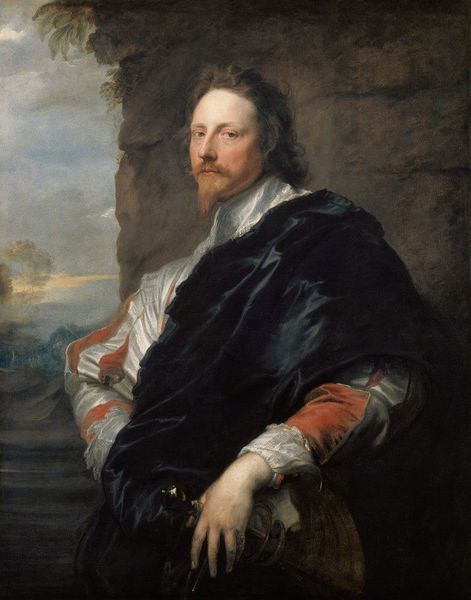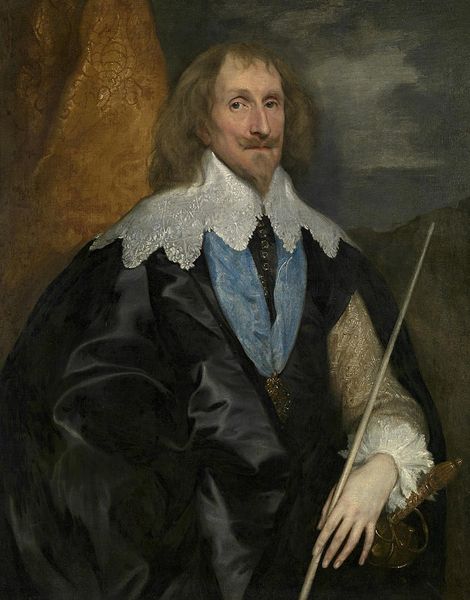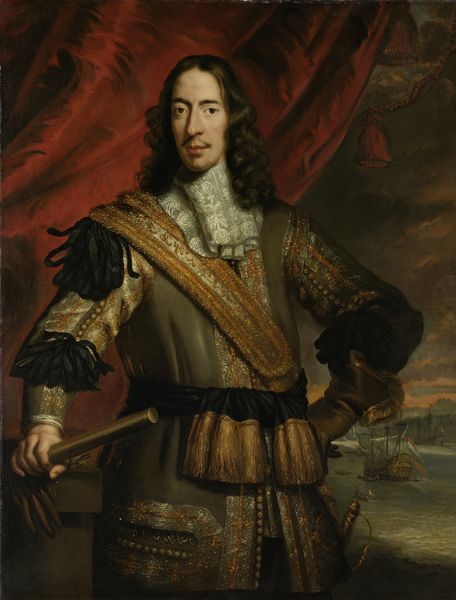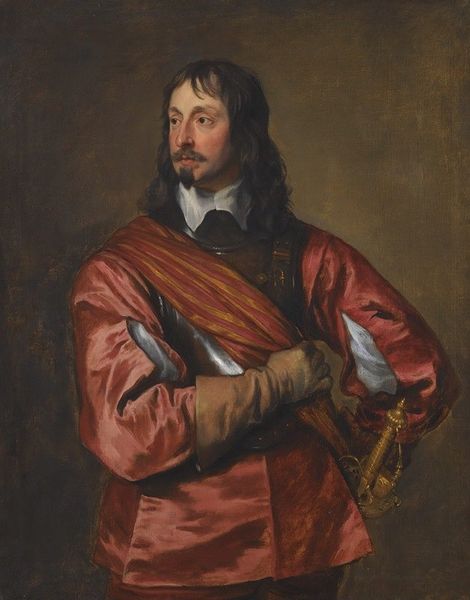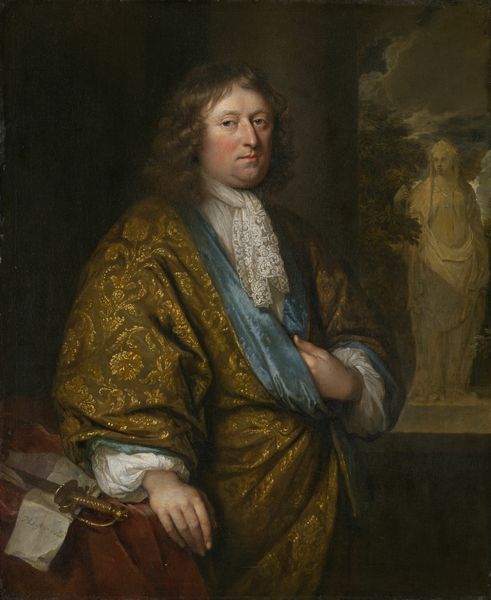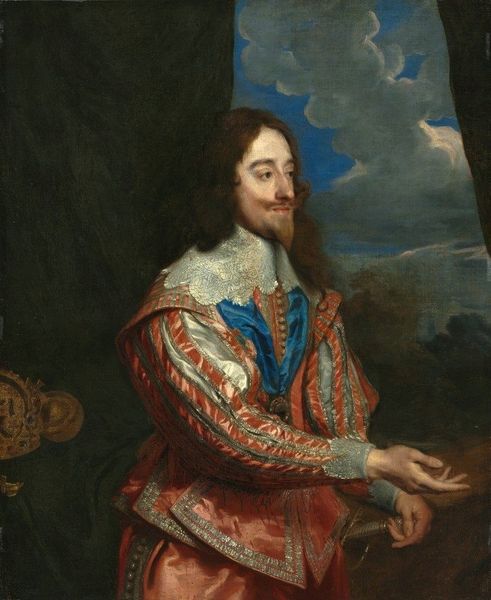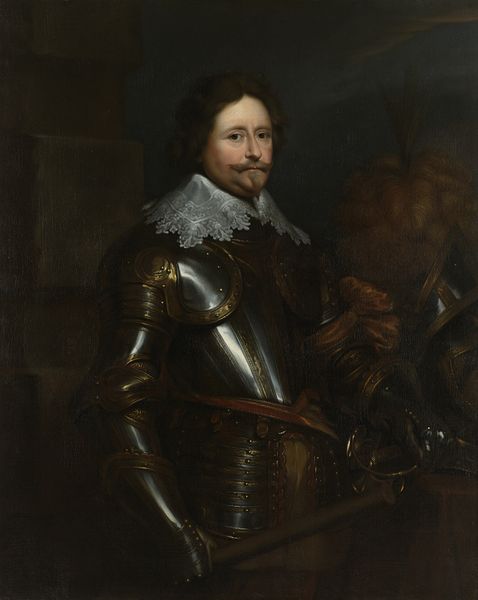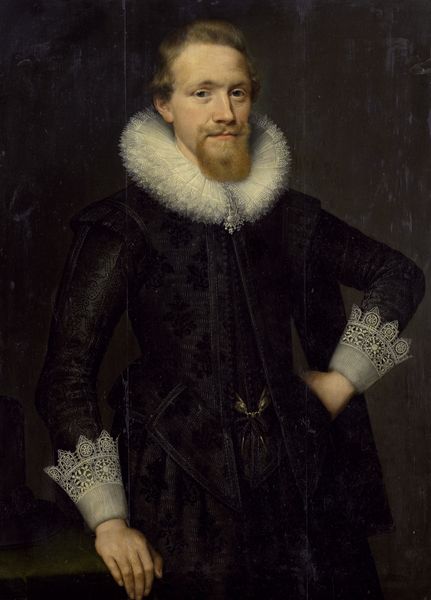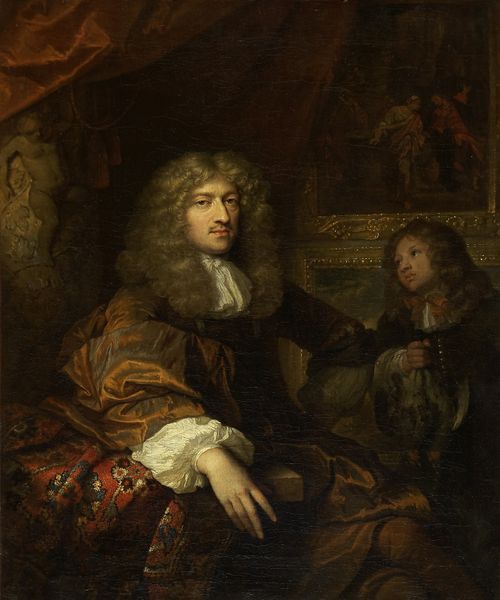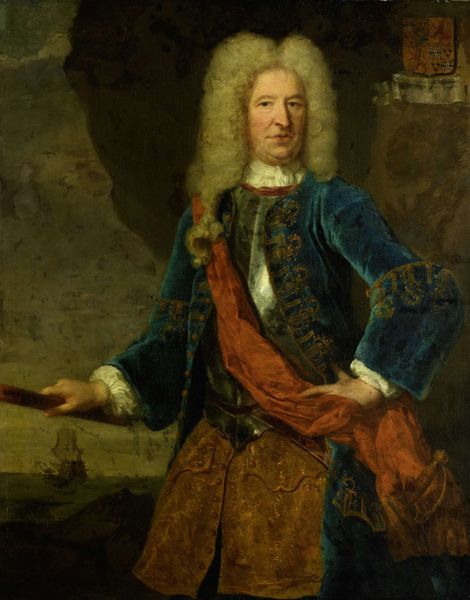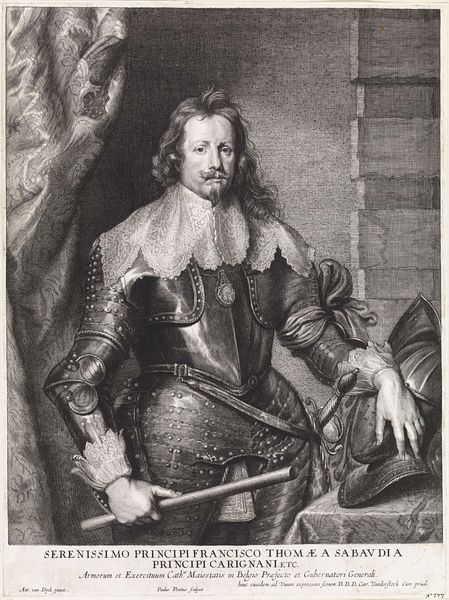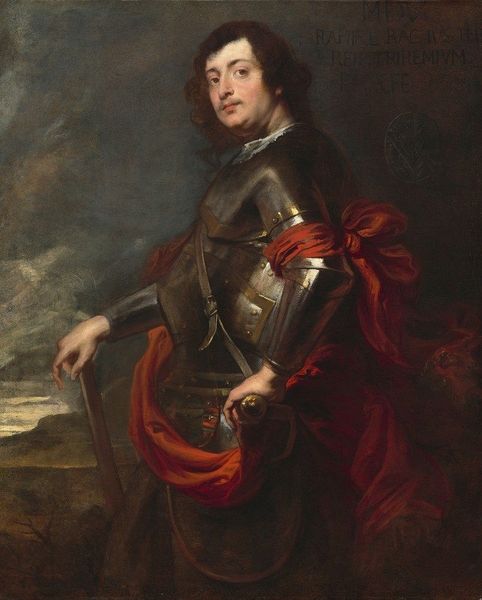
oil-paint
#
portrait
#
character portrait
#
baroque
#
portrait image
#
portrait
#
oil-paint
#
oil painting
#
male portrait
#
portrait reference
#
portrait head and shoulder
#
animal portrait
#
genre-painting
#
history-painting
#
facial portrait
#
portrait art
Copyright: Public domain
Editor: Here we have William Dobson's "Portrait of Endymion Porter," painted in 1645, rendered with oil paint. The composition feels very layered, with figures, busts, and landscapes all vying for attention. How do you interpret the structure of this piece? Curator: The painting presents a complex layering of symbolic and structural elements. Consider the interplay between the main figure, Porter, and the sculpted figures behind him. Does the composition suggest a conscious hierarchy, or a more democratic arrangement of visual elements? The tension arises, I suggest, from the flattening effect inherent in the oil paint medium, contrasting with attempts to simulate three-dimensionality. Editor: I notice that Dobson has employed a rather limited color palette. What does the selection of colors and their distribution tell you about the painting's purpose and style? Curator: Observe the use of muted browns, golds, and blues. Note the relationship among hues, and among shapes with similar colors. How does that palette interact with the forms depicted? Is there a harmony, or a deliberate clash? Consider also the role of light and shadow. It structures forms but is there drama or theatricality or a more restrained effect, in line with 17th-century conventions? Editor: That’s fascinating! Thinking about the structural balance really changes how I see the portrait. Curator: Indeed. The painting encourages us to closely examine not only *what* is depicted, but also *how* it is depicted. Hopefully this leads you and the listener towards a deeper engagement with Dobson's artistic choices.
Comments
No comments
Be the first to comment and join the conversation on the ultimate creative platform.

